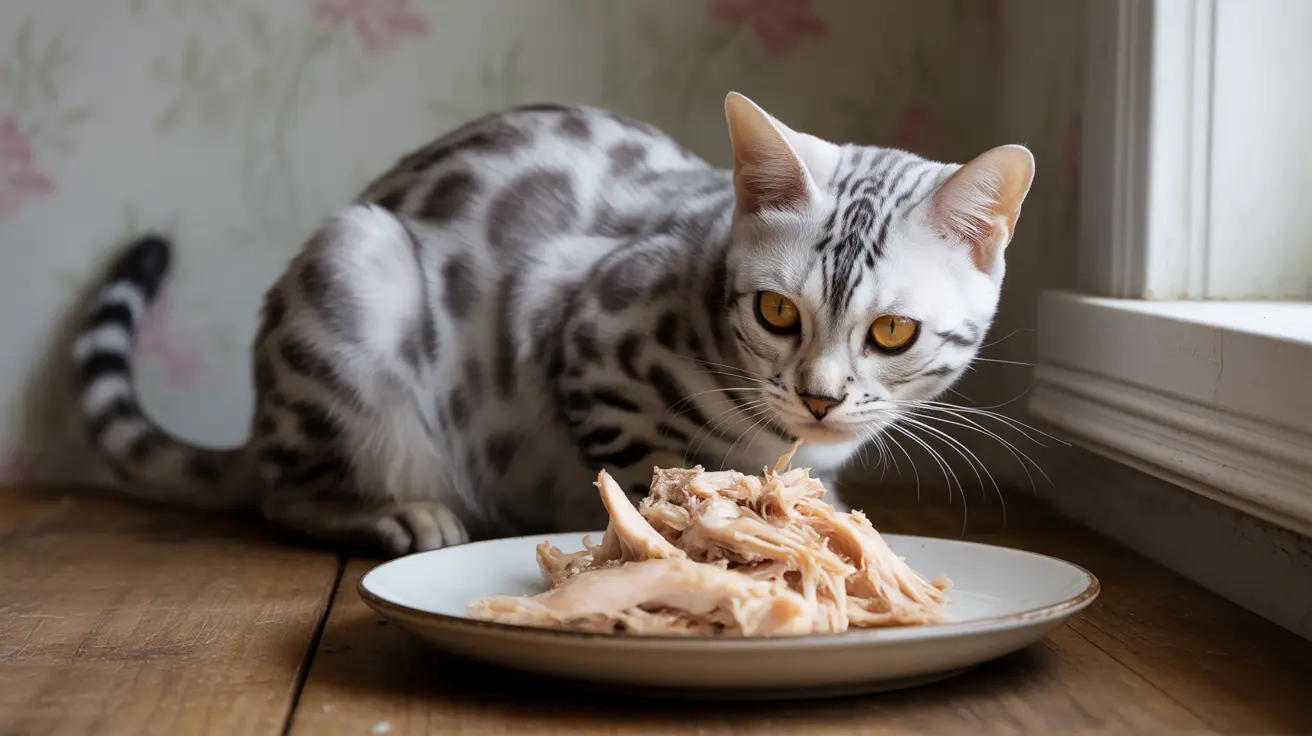Preparing homemade chicken for your feline friend can be a rewarding way to ensure they're getting fresh, nutritious meals. Whether you're looking to supplement your cat's commercial diet or create homemade meals, knowing how to properly cook chicken for cats is essential for their health and safety.
In this comprehensive guide, we'll explore the best methods for preparing chicken for cats, including important nutritional considerations, safety precautions, and step-by-step cooking instructions.
Selecting the Right Chicken for Your Cat
When cooking chicken for cats, choosing the right cuts is crucial for optimal nutrition and safety.
- Boneless, skinless chicken breast: Ideal for its lean protein content
- Chicken thighs: Higher in fat but still appropriate in moderation
- Organ meats: Can be included occasionally for additional nutrients
The Nutritional Benefits of Chicken
Chicken provides essential nutrients that cats need for optimal health:
- High-quality protein for muscle maintenance
- Essential amino acids, including taurine
- B vitamins for energy metabolism
- Minerals such as phosphorus and selenium
Safe Cooking Methods for Cat-Friendly Chicken
Boiling Method
The most common and safest method for cooking chicken for cats:
- Cut chicken into small, manageable pieces
- Place in pot with enough water to cover
- Bring to boil, then reduce to simmer
- Cook for 15-20 minutes until thoroughly cooked
- Allow to cool before serving
Steaming Method
An alternative that helps retain more nutrients:
- Prepare chicken pieces as above
- Place in steamer basket
- Steam for 20-25 minutes
- Check internal temperature reaches 165°F (74°C)
Proper Storage and Serving Guidelines
Proper storage is crucial for maintaining food safety:
- Refrigerate portions for up to 3 days
- Freeze extra portions for up to 2 months
- Use airtight containers to maintain freshness
- Never leave cooked chicken at room temperature for more than 2 hours
Important Safety Considerations
When preparing chicken for cats, keep these safety points in mind:
- Never add seasonings, salt, or oils
- Remove all bones before serving
- Ensure chicken is thoroughly cooked
- Clean all preparation surfaces thoroughly
- Wash hands before and after handling raw chicken
Frequently Asked Questions
How do I safely prepare boiled chicken for my cat at home?
Boil boneless, skinless chicken in plain water until fully cooked (internal temperature of 165°F). Don't add any seasonings or oils. Cool completely before serving, and cut into appropriate-sized pieces for your cat.
What are the main nutritional benefits of feeding chicken to my cat, and are there any risks?
Chicken provides essential protein, amino acids, and B vitamins. However, chicken alone isn't a complete diet. Risks include nutritional deficiencies if fed exclusively without proper supplementation, and potential foodborne illness if not properly prepared.
Can I add vegetables or grains to my cat's boiled chicken recipe, and if so, which ones are safe?
While cats are obligate carnivores, small amounts of certain vegetables like carrots or pumpkin can be added. Avoid onions, garlic, and other toxic vegetables. Grains aren't necessary but can be included in small amounts if your cat tolerates them.
How should I store homemade boiled chicken cat food, and how long does it last?
Store cooked chicken in an airtight container in the refrigerator for up to 3 days, or freeze for up to 2 months. Always thaw frozen portions in the refrigerator, never at room temperature.
Should I supplement my cat's homemade chicken diet with vitamins, and what are the essential nutrients they need?
Yes, if feeding chicken as a primary diet, supplements are necessary to ensure complete nutrition. Essential nutrients include taurine, calcium, various vitamins, and minerals. Consult with your veterinarian for specific supplementation needs.
Conclusion
Cooking chicken for your cat can be a healthy addition to their diet when done properly. Remember to always consult with your veterinarian before making significant changes to your cat's diet, and ensure any homemade food is part of a balanced nutritional plan.






